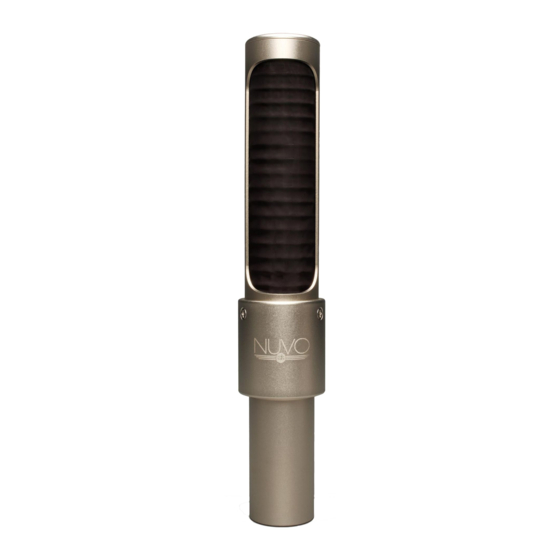
AEA N22 Owner's Manual
Active near-field ribbon mic
Hide thumbs
Also See for N22:
- Owner's manual (14 pages) ,
- Specifications (2 pages) ,
- Owner's manual (12 pages)
Advertisement
Quick Links
Advertisement

Summary of Contents for AEA N22
- Page 1 AEA N22 OWNER’S MANUAL ACTIVE NEAR-FIELD RIBBON MIC...
-
Page 2: Welcome
Whether you are a musician, home studio owner, or experienced producer/engineer, you will find that the N22 provides a great ribbon tone without the need for EQ in most applications. Most importantly, the N22 was designed by listening first, and measuring only after experienced musicians told us the microphone sounded great. -
Page 3: Table Of Contents
CONTENTS WELCOME INTRODUCTION SUPPORT GENERAL GUIDELINES APPLICATION ADVICE SPECIFICATIONS... -
Page 4: Introduction
USB or Firewire audio interfaces in home studio setups. The highly protected pure aluminum ribbon allows for using the N22 in live sound applications and vocal recording without the need for an additional pop-filter. -
Page 5: General Guidelines
The phantom current draw for active AEA ribbon mics is 7 milliamps. IEC specifies P48 power should be able to deliver 10 milliamps per input. Some USB and battery-powered audio interfaces won’t deliver this. - Page 6 Windtech developed a custom foam windscreen that contours the form of the N8 and N22 grille structure. This AEA NUVO windscreen provides excellent protection from wind blasts, significantly reduces breath noise on close-up vocals, and allows you to use your NUVOs outdoors.
-
Page 7: Application Advice
MICROPHONE POSITIONING The shock-mounted clip that is supplied with the N22 microphone was designed to keep structure-borne noise transmitted through the microphone stand away from the low-tuned ribbon transducer. - Page 8 Such a setup requires complex and often cumbersome headphone monitor mixes for the musicians. Since the N22 is bidirectional, it exhibits nulls at right angles to the principal axis. These nulls produce a “plane of rejection” around the sides, top and bottom of the mic that can be used effectively to reduce leakage.
- Page 9 A NEAR-FIELD RIBBON The N22 is a near-field ribbon mic and is best used up-close to the source. Its optimal distance for miking is between one and 18 inches (2 cm –...
-
Page 10: Specifications
SPECIFICATIONS Operating Principle: Pressure gradient transducer Directional Pattern: Bidirectional Frequency Range: <20 Hz to >20 kHz Maximum SPL: 141 dB SPL (1% third harmonic > 1 kHz) Sensitivity: 8.3 mV/Pa (at 1 kHz, no load) Output Impedance: 92 Ω broadband Recommended Load Impedance: 1.0 kΩ... - Page 11 1.38” 1.62” Directivity -30° 30° -60° 60° -90° 90° -120° 120° 10000Hz 4000Hz 2000Hz -150° 150° 1000Hz 500Hz 180° 200Hz FREQUENCY RESPONSE 0 dB = -55dBV referenced to one Pascal (94 dV SPL).
- Page 12 AEARIBBONMICS.COM | @RIBBONMICS | INFO@RIBBONMICS.COM | (800) 798-9127...













Need help?
Do you have a question about the N22 and is the answer not in the manual?
Questions and answers